| At Ardeth backpacking gear, we love grapes and we love grapevines. We love how they provide food, how they look, we love the shade and the little ecosystems they create. So, we've been planting a variety of grapevines around our home so we can have our own, veganic and organic grapes. Our overall plan with our new home was to buy an inexpensive home with a large yard. We have to keep our bills low to start the business, and growing our own food helps us to do that and to become more sustainable. Grapevines can be a part of that. We get a variety of foods from grapes. Not only do we get fresh, delicious, veganic grapes, but we also get raisins, grape syrup, grape jam, and this year we might even try our hand at making wine. | Here is a little gallery of photos that inspired us. This grapevine is in Tulare and we just thought it was too awesome. Click on any photo to open the gallery and navigate with the arrow keys. |
| We're started our first grapevines along our southwest wall to produce grapes and to help shade the house from the summer sun. In the winter, the grapevines are dormant, so we still get the winter sun to warm the house. I built it with 2X4s and concrete reinforcing grid. It's been working out very well. Underneath it, we planted strawberries. Lawn care is obviously not a priority. Give me a break, I'm building sleeping bags. | Phase 1 grape trellis. Click on any photo to open the gallery and navigate with the arrow keys. |
| The second phase was to continue getting different kinds of grapevine starts and to establish vines along the sunny southeast corner of the house. Small trellises would link and, as the vines grew, we'd build an arbor over the area. This would be the third phase. Presumably, we would be able to wait a year or two until we need to build the arbor. No, I am not a carpenter. | Phase 2 trellises. Click on any photo to open the gallery and navigate with the arrow keys. |
| The key to saving money on this endeavor was all of the free grape stakes that I was able to get on Craigslist. After I brought them home, I took some time to figure out how I could best utilize them. What I really wanted was 1/2" stakes. Ripping the 2"X2" ancient redwood grape stakes into 1/2" stakes was not so simple, but I built a jig that allow me to safely rip into 1/2strips. For the taller trellises, I ripped the 2X4s that I got for free last year and have been sitting in my resource sequestration depot. The resource sequestration depot has also been unflatteringly referred to as "the junk pile" by my doting wife. I ripped the 2X4s into 1/2" X 1 1/2" strips in two stages. Then, I laid out a template on the workbench (an old door) and screwed and glued them together. I placed the surfaces that I wanted facing out down, as the screws were going to be on the upper surface, facing toward the house once the trellis was built. I drove stakes into the ground and mounted my trellises to them. They really didn't turn out looking as nice as I had hoped, but I change things around a bit in the winter when we prune the vines. | Building the trellises. Click on any photo to open the gallery and navigate with the arrow keys. |
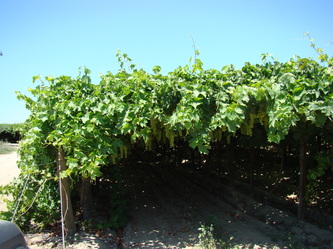
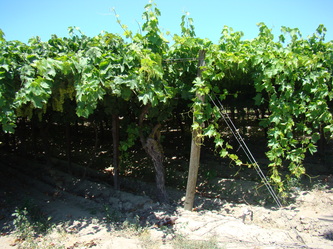
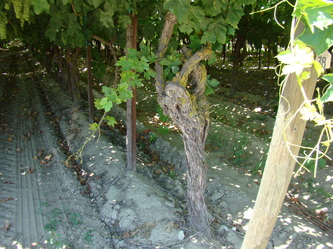
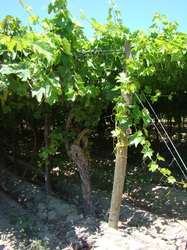

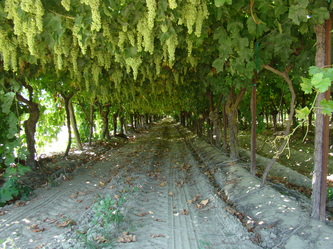
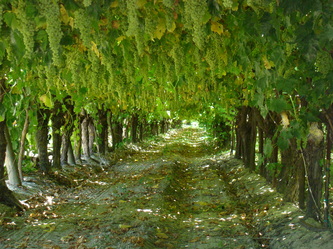
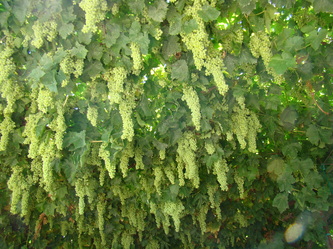
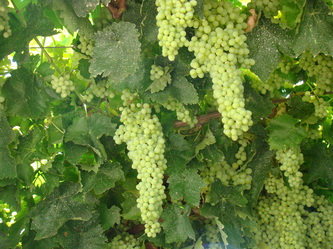
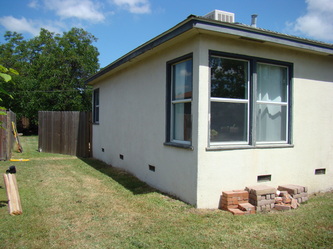
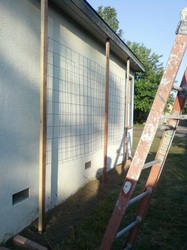
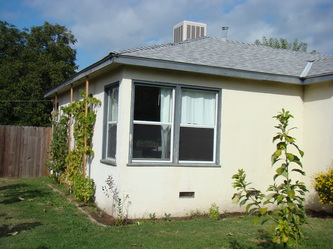
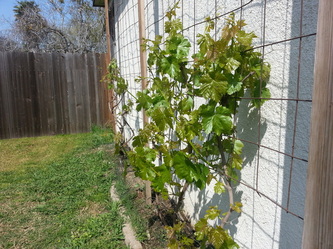
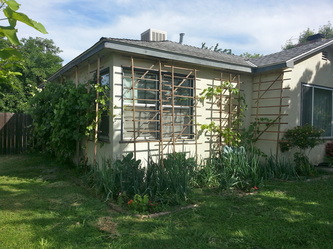
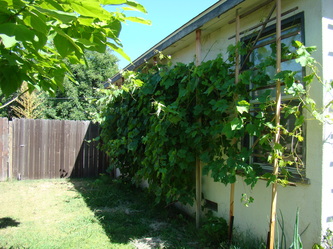
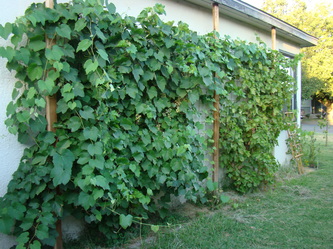
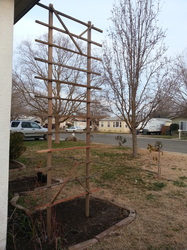
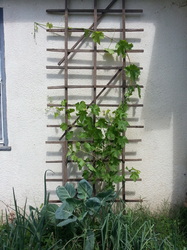
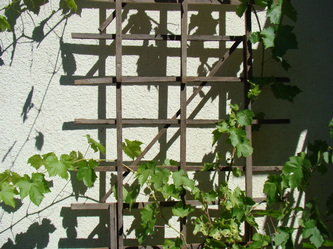
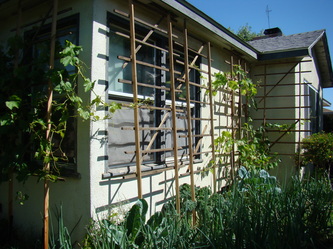

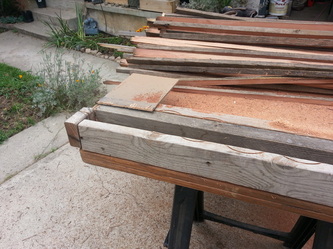
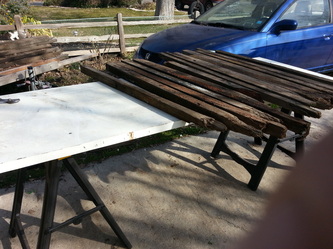
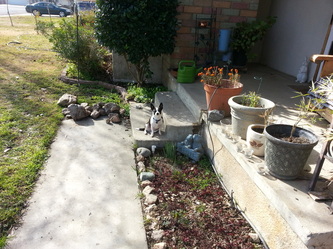
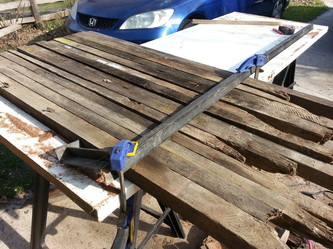
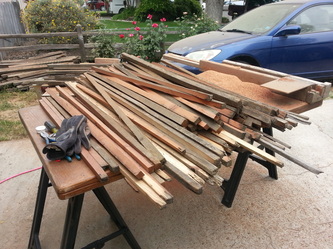
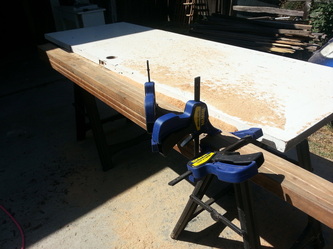
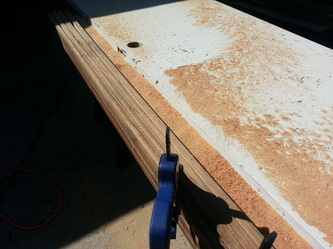
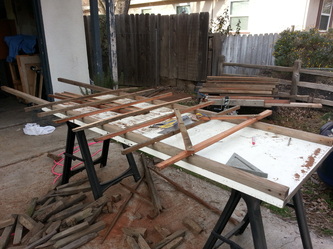
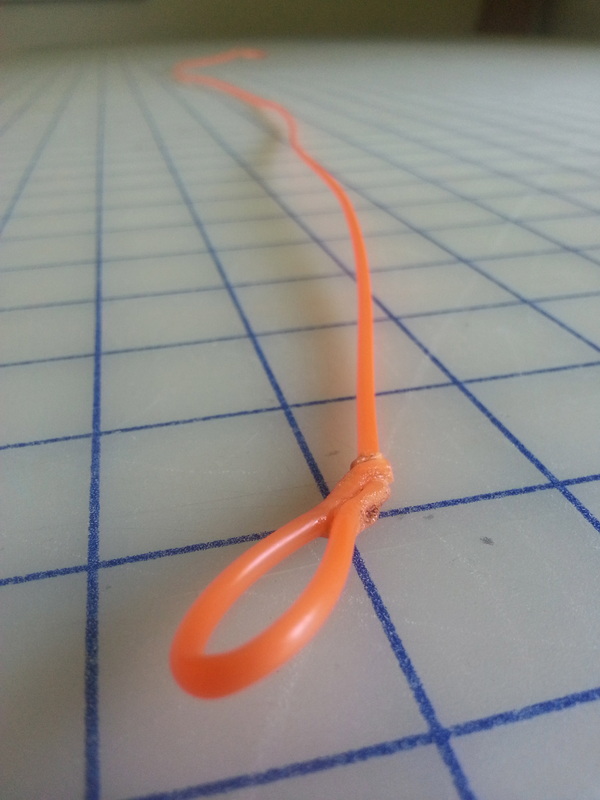
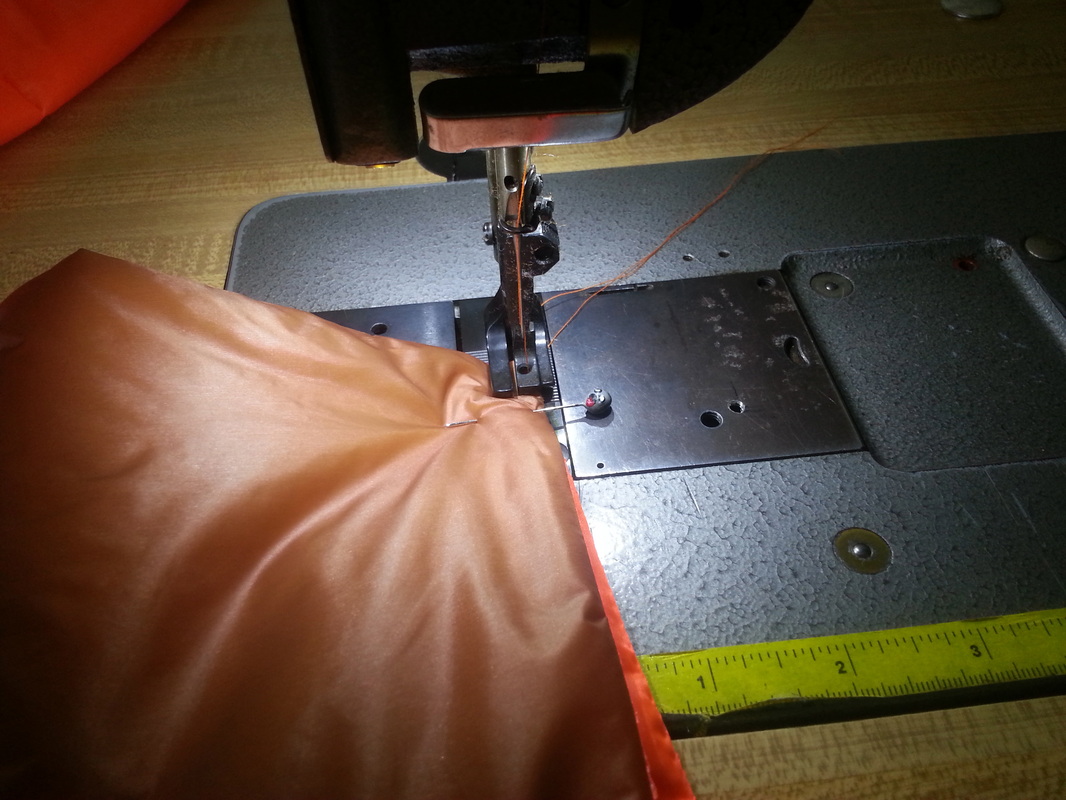



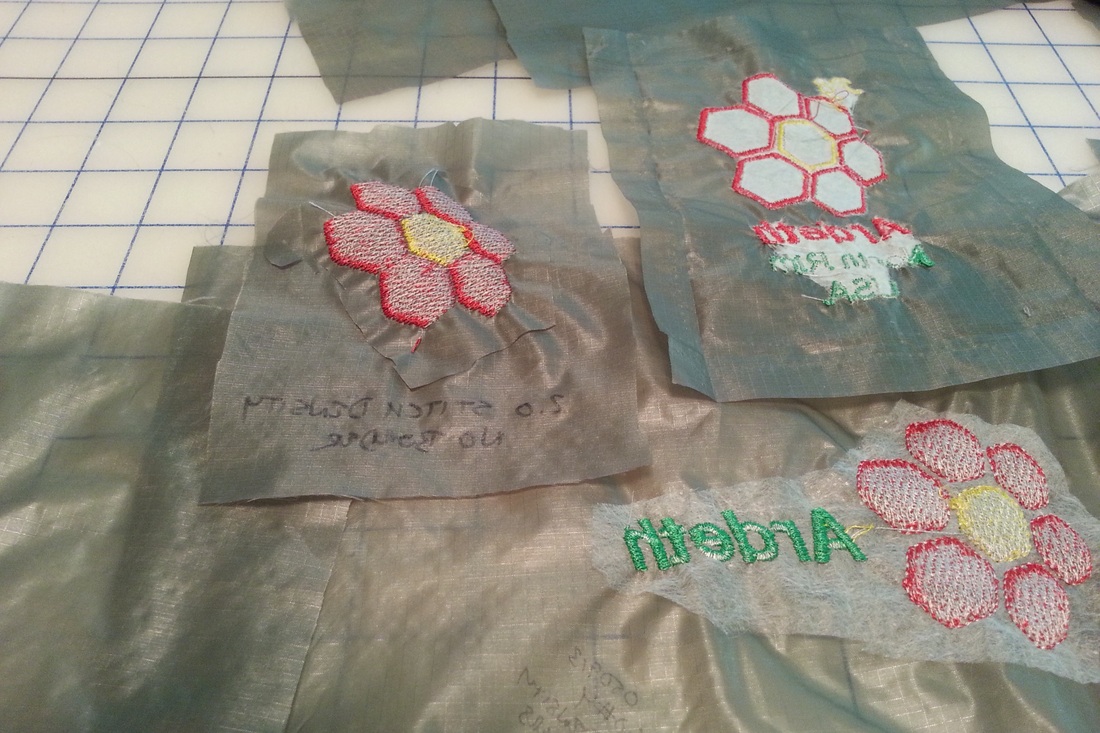
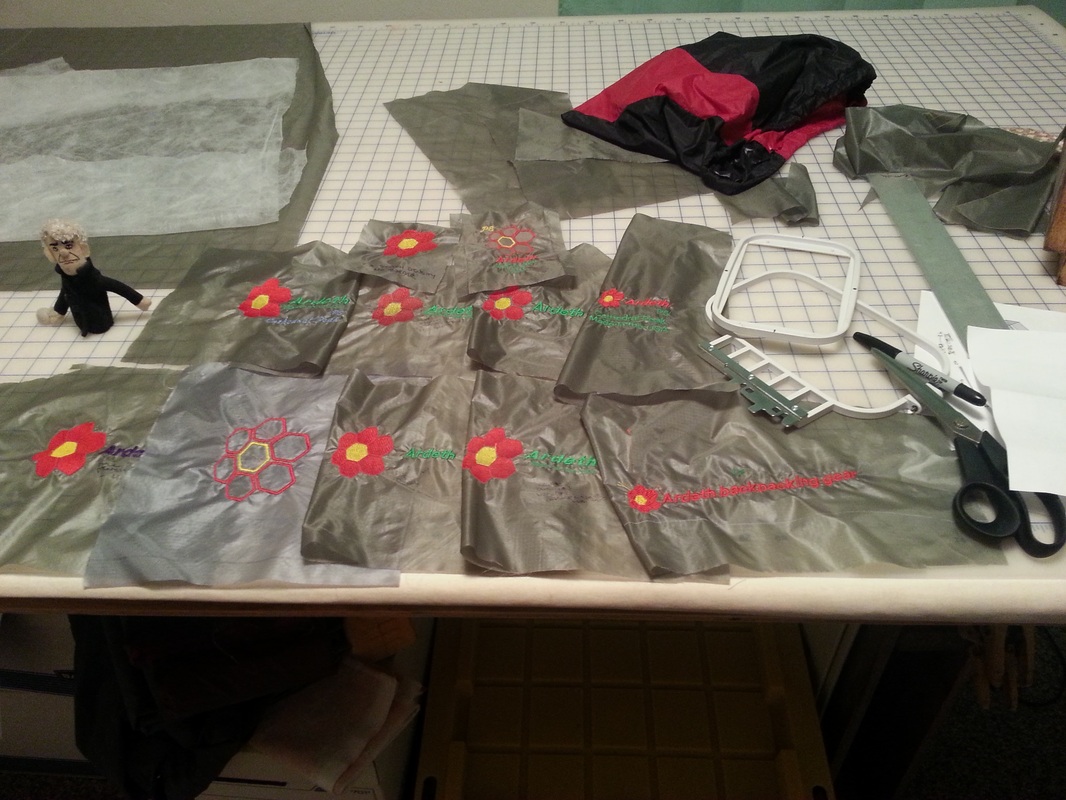

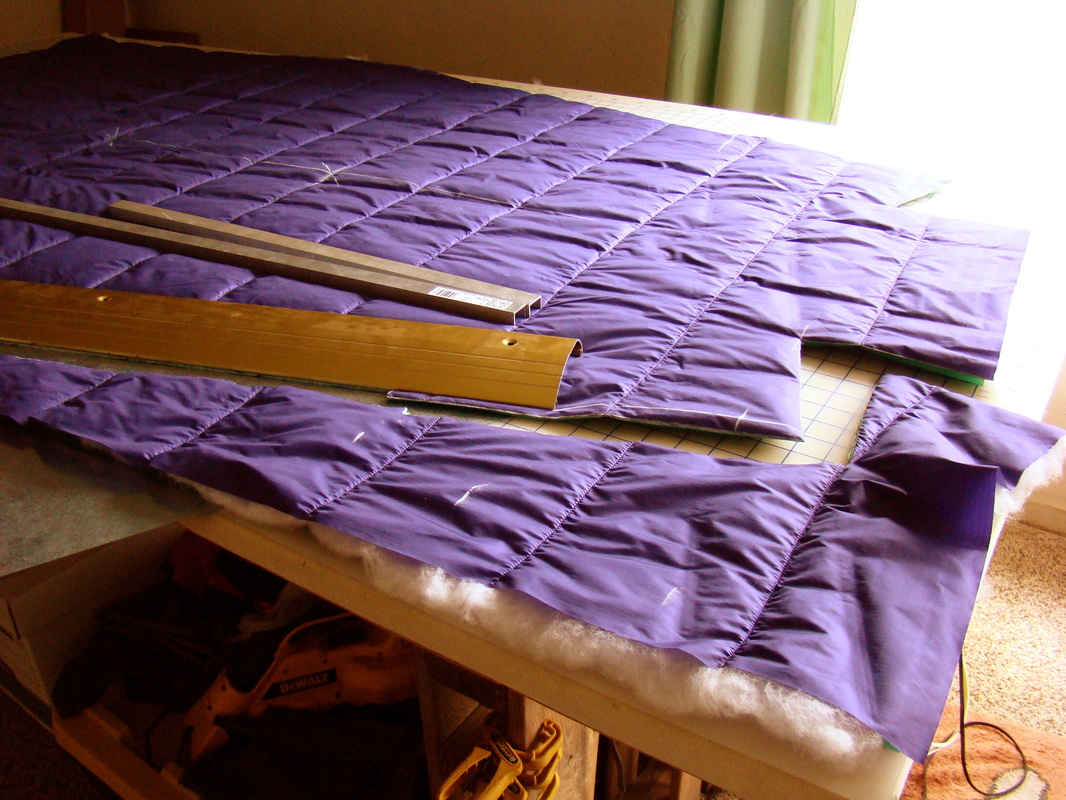
 RSS Feed
RSS Feed
